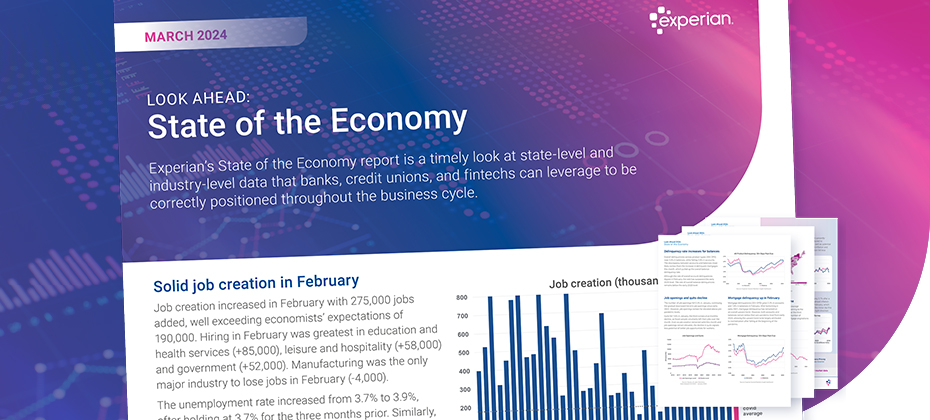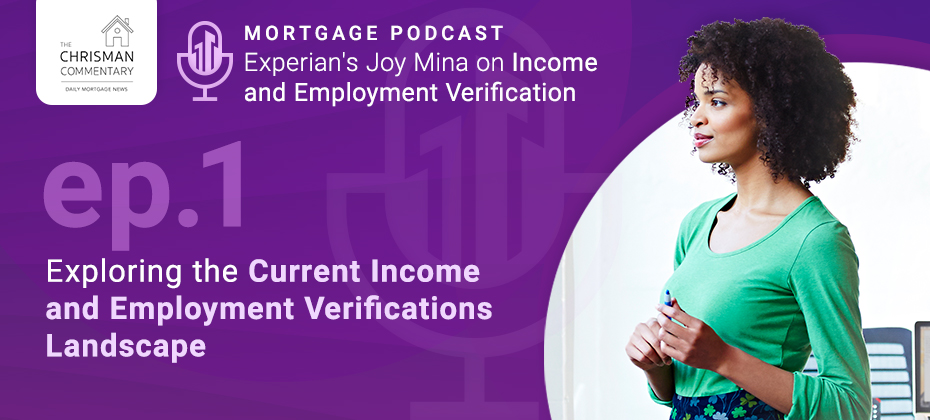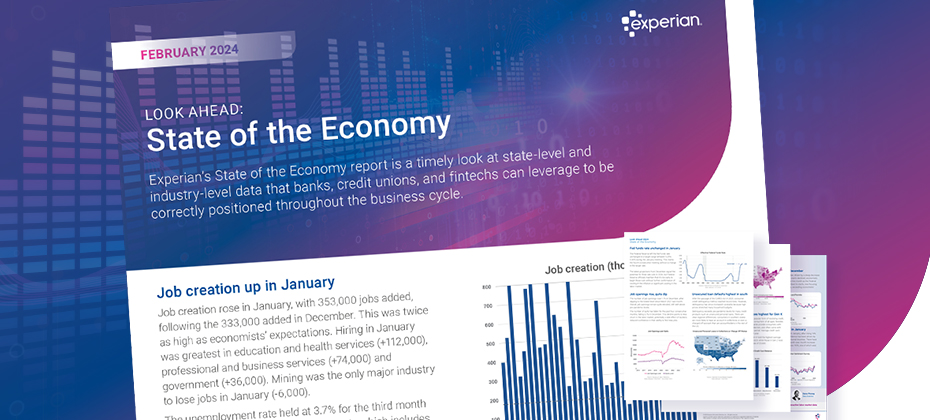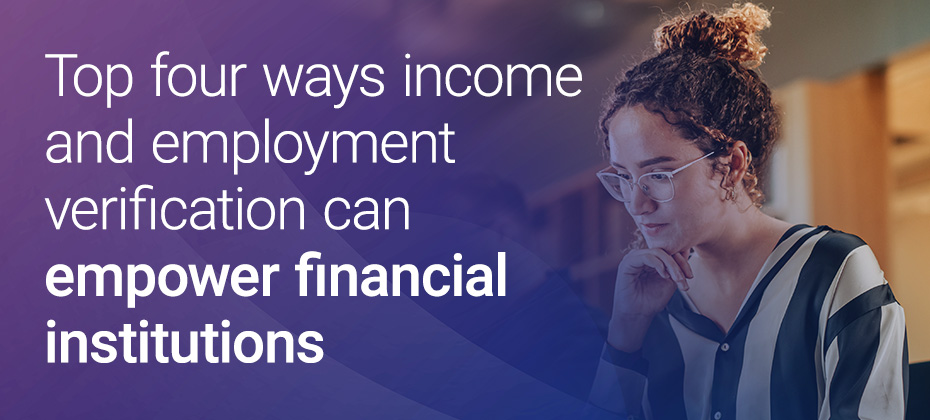Apply CIS Tag

For lenders, first payment default (FPD) is more than just financial jargon; it's a crucial metric in assessing credit risk. This blog post will walk you through the essentials of FPD, from defining the term to exploring how you can prevent and mitigate its potential impact. Understanding first payment default FPD occurs when a consumer fails to make their initial payment on a loan or credit agreement, which is often perceived as an early signal of a potential cascade of risky behavior. Recognizing FPD is the starting point for lenders to address potential issues with new borrowers before they escalate. One important aspect to grasp is the timeline of FPD. It’s not just about missing the first payment; it's about "early" missing. The timing of defaults is often critical in assessing the overall risk profile of a borrower or group of borrowers. The earlier a borrower starts to miss payments, the riskier they tend to be. Examining the causes of FPD The roots of FPD are diverse and can be classified into two broad categories: External factors: These include sudden financial crises, changes in employment status, or unforeseen expenses. Such factors are often beyond the borrower's immediate control. Internal factors: This category covers more deliberate or chronic financial habits, such as overspending, lack of savings, or overleveraging on credit. It's often indicative of longer-term financial instability. Understanding the causes of early payment default is the first step in effective risk management and customer engagement strategies. Implications of FPD for lenders FPD doesn't just signal immediate financial loss for lenders in terms of the missed installment. It sets off a cascade of consequences that affect the bottom line and the reputation of the institution. Financial loss. Lenders incur direct financial losses when a payment is missed, but the implications go beyond the missed payment amount. There are immediate costs associated with servicing, collections, and customer support. In the longer term, repeated defaults can lead to write-offs, impacting the institution's profitability and regulatory standing. Regulatory scrutiny. Repeated instances of FPD can also draw the attention of regulators, leading to scrutiny and potentially increased compliance costs. Mitigating first payment default Mitigating FPD requires a multifaceted approach that blends data, advanced analytics, customer engagement, and agile risk management. Lenders need to adopt strategies that can detect early signs of potential FPD and intervene preemptively. Data-driven decision-making. Leveraging advanced analytics and credit risk modeling is crucial. By incorporating transactional and behavioral data, lenders can make more accurate assessments of a borrower's risk profile. Utilizing predictive models can help forecast which borrowers are likely to default on their first payment, allowing for early intervention. Proactive customer engagement. Initiatives that revolve around education, personalized financial planning advice, and flexible payment arrangements can help borrowers who might be at risk of FPD. Proactive outreach can engage customers before a default occurs, turning a potential negative event into a positive experience. Agile risk management. Risk management strategies should be dynamic and responsive to changing market and customer conditions. Regularly reviewing and updating underwriting criteria, credit policies, and risk assessment tools ensures that lenders are prepared to tackle FPD challenges as they arise. Using FPD as a customer management tool Lastly, and perhaps most importantly, lenders can use FPD as a tool to foster better customer management. Every FPD is a data point that can provide insights into customer behavior and financial trends. By studying the causes and outcomes of FPD, lenders can refine their risk mitigation tools and improve their customer service offerings. Building trust through handling defaults. How lenders handle defaults, specifically the first ones, can significantly impact customer trust. Transparent communication, fair and considerate policies, and supportive customer service can make a difference in retaining customers and improving the lender's brand image. Leveraging data for personalization. The increasing availability of data means lenders can offer more personalized services. By segmenting customers based on payment behavior and response to early interventions, lenders can tailor offerings that meet the specific financial needs and challenges of individual borrowers. How Experian® can help First payment default is a critical aspect of credit risk management that requires attention and proactive strategies. By understanding the causes, implications, and mitigation strategies associated with FPD, financial institutions can not only avoid potential losses but also build stronger, more enduring relationships with their customers. Learn more about Experian’s credit risk modeling solutions. Learn more This article includes content created by an AI language model and is intended to provide general information.

Current economic conditions present genuine challenges for mortgage lenders. In this environment, first-time homebuyers offer exciting, perhaps unexpected, business growth potential. Market uncertainties have kept potential borrowers anxious and on the sidelines. The Federal Reserve's recent announcement that interest rates will remain steady for now has added to borrower anxiety. First-time homebuyers are no exception. They are concerned about the “right” time to jump in, buy a home, and own a mortgage. Despite worries over high interest rates and low inventory, many first-time homebuyers are tired of waiting for rates to drop and inventory to blossom. First-time buyers are eager to explore all avenues necessary to achieve homeownership. They show a willingness to be flexible when it comes to finding a house, considering options like a fixer upper or expanding their search to more affordable locations. The desire to escape the uncertainty and financial burden of renting is a strong driving force for first-time buyers. They see homeownership as a way to establish stability and build equity for their future. Despite the obstacles renters face in the competitive housing market, these potential buyers are motivated. Lenders who take time to understand who these buyers are and what matters to them will be ahead of the game. Notwithstanding stubbornly high interest rates, first-time homebuyers historically have shown remarkable resilience amid market fluctuations. According to a recent deep dive by Experian Mortgage experts into the buying patterns of first-time homebuyers, this group made 35-48% of all new purchases and 8-12% of all refinances between July 2022 and September 2023. First-time buyers represent both immediate potential and long-term client opportunities. How can lenders attract first-time homebuyers and drive growth from this market? The first-time homebuyer market largely consists of individuals in their early 40s and younger, also known as Gen Y and Gen Z. Rising costs of renting a home frustrate these individuals who are trying to save money for a down payment on a house and ultimately, buy their dream home. They want to settle down and look ahead to the future. For mortgage lenders who focus on understanding this younger first-time buyer market and developing targeted business strategies to attract them, great growth potential exists. Often, younger people feel locked out of buying opportunities, which creates uncertainty and apprehension about entering the market. This presents mortgage industry professionals with an incredible opportunity to show their value and grow their client base. To attract this market segment, lenders must adapt. Lenders must develop a comprehensive picture of this younger generation. Who are they? How do they shop? Where do they want to live? What is their financial situation? What are their financial and personal goals? Acknowledging difficulties in the housing market and showing them a well-conceived path forward to home ownership will win the day for the lender and the buyer. As interest rates are poised to decrease in 2024-2025, there is potential for a surge in demand from first-time homebuyers. Lenders should prepare for these potential buyers, now. It is crucial to reevaluate how to approach first-time buyers to identify new opportunities for expansion. Experian Mortgage examined first-time homebuyer trends to pinpoint prospects with good credit and provide analysis on potential areas of opportunity. For more information about the lending possibilities for first-time homebuyers, download our white paper. Download white paper

This series will dive into our monthly State of the Economy report, providing a snapshot of the top monthly economic and credit data for those in financial services to proactively shape their business strategies. As we near the end of the first quarter, the U.S. economy has maintained its solid standing. We're also starting to see some easing in a few areas. This month saw a slight uptick in unemployment, slowed spending growth, and a slight increase in annual headline inflation. At the same time, job creation was robust, incomes continued to grow, and annual core inflation cooled. In light of the mixed economic landscape, this month’s upcoming Federal Reserve meeting and their refreshed Summary of Economic Projections should shine some light on what’s in store in the coming months. Data highlights from this month’s report include: Annual headline inflation increased from 3.1% to 3.2%, while annual core inflation cooled from 3.9% to 3.8%. Job creation remained solid, with 275,000 jobs added this month. Unemployment increased to 3.9% from 3.7% three months prior. Mortgage delinquencies rose for accounts (2.3%) and balances (1.8%) in February, contributing to overall delinquencies across product types. Check out our report for a deep dive into the rest of March’s data, including consumer spending, the housing market, and originations. To have a holistic view of our current environment, we must understand our economic past, present, and future. Check out our annual chartbook for a comprehensive view of the past year and download our latest forecasting report for a look at the year ahead. Download March's State of the Economy report Download latest forecast For more economic trends and market insights, visit Experian Edge.

To say “yes” to consumers faster and more efficiently, financial institutions need flexible access to instant income and employment verification data. In an episode of “The Chrisman Commentary” podcast, Joy Mina, Director of Product Commercialization at Experian, talks about how income and employment verification has changed since Experian entered the market, the benefits of a waterfall strategy, and what’s next in our verifications journey. “Back then, we were hearing lenders primarily asking for more innovative solutions,” said Joy. “They wanted more flexibility without sacrificing quality of service.” Listen to the full episode to learn more about what lenders look for in an income and employment verification solution and how Experian VerifyTM is meeting these needs. Listen to podcast Learn more

Ensuring the reliability of tenant applications is paramount to running a successful property management business. But with an exponential rise in prospective residents using fake financial documents to inflate income and employment status, how do property managers navigate and detect fake paystubs without stepping on a landmine of liability? The marketplace of deception Paystub generator websites As you embrace the commitment to diligence, be aware that some legitimate websites can be unknowingly used by fraudsters to create counterfeit financial documents. Knowledge is your ally here. At the touch of a button, even the minimally tech inclined can produce pay stubs that appear convincing. There are dozens of sites that offer paystub generator software, including: Design and editing software websites that are accessible to people beyond just creative professionals. Popular e-commerce platform stores that host apps capable of creating paystubs. Mobile app stores that allow users to download apps for use on all major mobile devices. Key indicators of a fake paystub Remember, as a property manager or owner, you are responsible for scrutinizing these documents to protect your business interests. Use your awareness to be vigilant, verifying every piece of information to ensure the credibility of prospective tenants. While some of these falsified paystubs may appear to be legitimate, they are usually not perfect. Here are some quick checks which may help you spot a fake or trigger a deeper review quickly. Watch out for elusive typos Erroneous spelling, particularly in company names and financial terms, is a big red flag. Keep your eyes peeled for these unruly characters. Distorted watermarks A legitimate paystub should carry official watermarks or specific symbols that indicate its authenticity. However, be on the lookout for watermarks that seem off — sometimes, they're too conspicuous or amateurish, which can be a tell-tale sign of forgery. Authentic watermarks should be subtle and consistent with the company's brand. Crunching the numbers Inaccurate calculations can unravel a fake paystub. If the numbers just don't add up or pay dates vary inexplicably, you should investigate further. Inconsistent font Professional payroll systems stick to a consistent font. If you notice various font styles and sizes, it's worth investigating further. Authenticity lies in uniformity. Going logo-less? A missing company logo, or one that looks like it was copied from a low-resolution image on the internet, should trigger suspicion. Unusual tax deductions Abnormal tax deductions could indicate someone's fiddling with the figures. Brush up on your tax knowledge or consult with an expert if something seems off-the-wall. Final food for thought Remember, having the right knowledge and tools empowers you to make informed decisions, safeguarding your property from potential fraudsters. Be diligent, stay informed, and leverage technology to support your processes. Action steps to take today Educate your team: Make sure everyone involved in the application review process knows what to look for. Develop a standard operating procedure: Update your existing (or develop) Standard Operating Procedures: As new ways of gaming the system arise, make sure your particular procedures are keeping up with the times. For example, include steps for the following: Understand tenant screening laws in your area. Create consistent resident screening criteria. Check credit report and background. Verify employment and income. Review rental history and evictions (if any). Check criminal record with multi-state search. Interview residents before signing a lease. Follow a consistent policy when accepting or rejecting applicants. Embrace technology: Income and employment verification solutions can verify income directly from a trusted data source and avoid the paystub predicament altogether. Consider implementing a verification system that leaves no room for guesswork. Our verification solution, Experian VerifyTM, provides accurate, efficient, and compliant income and employment verification services. With Experian Verify, property managers can navigate the complexities of tenant-related income and employment verification with ease, ensuring they are adhering to Fair Housing laws and detecting fraudulent behavior. To learn more about how Experian Verify can benefit your property business, please contact us and visit us online. Learn more

This article was updated on March 11, 2024. As a lender, it’s important to understand a consumer’s credit behavior and whether it's improving or deteriorating over time. Sure, you can pull a credit score at any moment, but it's merely a snapshot. Knowing a consumer’s credit information at a single point in time only tells part of the story. Two consumers can have the same credit score, but one consumer’s score could be moving up while another’s score could be moving down. To understand the whole story, lenders need the ability to leverage trended data to assess a consumer’s credit behavior over time. What to know about trended data Trended data provides key balance and payment data for the previous 24 months. By analyzing historical payment information, lenders can determine if a consumer is consistently paying more than the minimum payment, has a demonstrated ability to pay, and shows no signs of payment stress. It can conversely identify if a consumer is making only minimum payments and has increasing payment stress. Experian’s Trended Data is comprised of five fields of historical payment information over a 24-month period. It includes: Balance Amount Original Loan / Limit Amount Scheduled Payment Amount Actual Payment Amount Last Payment Date Knowing how a consumer uses credit, or pays back debt over time, can help lenders offer the right products and terms to increase response rates, determine up-sell and cross-sell opportunities, and limit loss exposure. Using a consumer’s historical payment information also provides a more accurate assessment of future behavior, helping lenders effectively manage changes in risk, predict balance transfer activity, and prevent attrition. The challenge For lenders to extract the benefits of trended data, they need to analyze an enormous amount of data. Five fields of data across 24 months on every trade is huge and can be difficult for lenders with limited analytical resources to manage. For example, a single consumer with 10 trades on file would have upwards of 1,200 data points to analyze. Multiply that by a file of 100,000 consumers and you are now dealing with over 120,000,000 data points. Additionally, if lenders utilize the trended data in their underwriting processing and intend to use it to decline consumers, they need to create their own adverse action reason codes to communicate to the consumer. Not all lenders are equipped to take on this level of effort. Still, there are trended data solutions to assist lenders with managing and unlocking the power of trended data. How Experian can help Experian’s pre-calculated solutions allow even the smallest lenders to quickly and effectively action on the benefits of trended data, minus the hassles of analyzing it. Trended data, and the solutions built from it, allow lenders to effectively predict where a consumer is going based on where they’ve been. And really, that can make all the difference when it comes to smart lending decisions. Get started today

This article was updated on March 7, 2024. Like so many government agencies, the U.S. military is a source of many acronyms. Okay, maybe a few less, but there really is a host of abbreviations and acronyms attached to the military – and in the regulatory and compliance space, that includes SCRA and MLA. So, what is the difference between the two? And what do financial institutions need to know about them? Let’s break it down in this basic Q&A. SCRA and MLA: Who is covered and when are they covered? The Servicemember Civil Relief Act (SCRA) protects service members and their dependents (indirectly) on existing debts when the service member becomes active duty. In contrast, the Military Lending Act (MLA) protects service members, their spouses and/or covered dependents at point of origination if they are on active duty at that time. For example, if a service member opens an account with a financial institution and then becomes active military, SCRA protections will apply. On the other hand, if the service member is of active duty status when the service member or dependent is extended credit, then MLA protections will apply. Both SCRA and MLA protections cease to apply to a credit transaction when the service member ceases to be on active duty status. What is covered? MLA protections apply to all forms of payday loans, vehicle title loans, refund anticipation loans, deposit advance loans, installment loans, unsecured open-end lines of credit, and credit cards. However, MLA protections exclude loans secured by real estate and purchase-money loans, including a loan to finance the purchase of a vehicle. What are the interest rate limitations for SCRA and MLA? The SCRA caps interest rate charges, including late fees and other transaction fees, at 6 percent. The MLA limits interest rates and fees to 36 percent Military Annual Percentage Rate (MAPR). The MAPR is not just the interest rate on the loan, but also includes additional fees and charges including: Credit insurance premiums/fees Debt cancellation contract fees Debt suspension agreement fees and Fees associated with ancillary products. Although closed-end credit MAPR will be a one-time calculation, open-end credit transactions will need to be calculated for each covered billing cycle to affirm lender compliance with interest rate limitations. Are there any lender disclosure requirements? There is only one set of circumstances that triggers SCRA disclosures. The Department of Housing and Urban Development (HUD) requires that SCRA disclosures be provided by mortgage servicers on mortgages at 45 days of delinquency. This disclosure must be provided in written format only. For MLA compliance, financial institutions must provide the following disclosures: MAPR statement Payment obligation descriptions Other applicable Regulation Z disclosures. For MLA, it is also important to note that disclosures are required both orally and in a written format the borrower can keep. How Experian can help Experian's solutions help you comply with the Department of Defense's (DOD's) final amendment rule. We can access the DOD's database on your behalf to identify MLA-covered borrowers and provide a safe harbor for creditors ascertaining whether a consumer is covered by the final rule's protection. Visit us online to learn more about our SCRA and military lending act compliance solutions. Learn more

This series will dive into our monthly State of the Economy report, providing a snapshot of the top monthly economic and credit data for those in financial services to proactively shape their business strategies. In February, economic growth and job creation outperformed economists’ expectations, likely giving confirmation to the Federal Reserve that it remains too early to begin cutting rates. Data highlights from this month’s report include: U.S. real GDP rose 3.3% in Q4 2023, driven by consumer spending and bringing the average annual 2023 growth to 2.5%, the same as the five-year average growth prior to the pandemic. The labor market maintained its strength, with 353,000 jobs added this month and unemployment holding at 3.7% for the third month in a row. Consumer sentiment rose 13% in January, following a 14% increase in December, as consumers are feeling some relief from cooling inflation. Check out our report for a deep dive into the rest of February’s data, including inflation, the latest Federal Reserve announcement, the housing market, and credit card balances. To have a holistic view of our current environment, we must understand our economic past, present, and future. Check out our annual chartbook for a comprehensive view of the past year and register for our upcoming Macroeconomic Forecasting webinar for a look at the year ahead. Download report Register for webinar For more economic trends and market insights, visit Experian Edge.

This article was updated on February 21, 2024. With the rise of technology and data analytics in the financial industry today, it's no longer enough for companies to rely solely on traditional marketing methods. Data-driven marketing insights provide a more sophisticated and comprehensive view of shifting customer preferences and behaviors. With this in mind, this blog post will highlight the importance of data-driven marketing insights, particularly for financial institutions. The importance of data-driven marketing insights 30% of companies say poor data quality is a key challenge to delivering excellent customer experiences. Today’s consumers want personalized experiences built around their individual needs and preferences. Data-driven marketing insights can help marketers meet this demand, but only if it is fresh and accurate. When extending firm credit offers to consumers, lenders must ensure they reach individuals who are both creditworthy and likely to respond. Additionally, their message must be relevant and delivered at the right time and place. Without comprehensive data insights, it can be difficult to gauge whether a consumer is in the market for credit or determine how to best approach them. READ: Case study: Deliver timely and personalized credit offers The benefits of data-driven marketing insights By drawing data-driven marketing insights, you can reach and engage the best customers for your business. This means: Better understanding current and potential customers To increase response and conversion rates, organizations must identify high-propensity consumers and create personalized messaging that resonates. By leveraging customer data that is valid, fresh, and regularly updated, you’ll gain deeper insights into who your customers are, what they’re looking for and how to effectively communicate with them. Additionally, you can analyze the performance of your campaigns and better predict future behaviors. Utilizing technology to manage your customer data With different sources of information, it’s imperative to consolidate and optimize your data to create a single customer view. Using a data-driven technology platform, you can break down data silos by collecting and connecting consumer information across multiple sources and platforms. This way, you can make data available and accessible when and where needed while providing consumers with a cohesive experience across channels and devices. Monitoring the accuracy of your data over time Data is constantly changing, so implementing processes to effectively monitor and control quality over time is crucial. This means leveraging data quality tools that perform regular data cleanses, spot incomplete or duplicated data, and address common data errors. By monitoring the accuracy of your data over time, you can make confident decisions and improve the customer experience. Turning insights into action With data-driven marketing insights, you can level up your campaigns to find the best customers while decreasing time and dollars wasted on unqualified prospects. Visit us to learn more about how data-driven insights can power your marketing initiatives. Learn more Enhance your marketing strategies today This article includes content created by an AI language model and is intended to provide general information.

Developing machine learning (ML) credit risk models can be more challenging than traditional credit risk modeling approaches. But once deployed, ML models can increase automation and expand a lender’s credit universe. For example, by using ML-driven credit risk models and combining traditional credit data with transactional bank data, a type of alternative credit data* , some lenders see a Gini uplift of 60 to 70 percent compared to a traditional credit risk model.1 New approaches to model operations are also helping lenders accelerate their machine learning model development processes and go from collecting data to deploying a new model in days instead of months. READ MORE: Getting AI-driven decisioning right in financial services What is machine learning model development? Machine learning model development is what happens before the model gets deployed. It's often broken down into several steps. Define the problem: If you’re building an ML credit risk model, the problem you may be trying to solve is anticipating defaults, improving affordability for borrowers or expanding your lending universe by scoring more thin-file and previously unscorable consumers. Gather, clean and stage data: Identify helpful data sources, such as internal, credit bureau and alternative credit data. The data will then need to be consolidated, structured, labeled and categorized. Machine learning can be useful here as well, as ML models can be trained to label and categorize raw data. Feature engineering: The data is then analyzed to identify the individual variables and clusters of variables that may offer the most lift. Features that may directly or unintentionally create bias should be removed or limited. Create the model: Deciding which algorithms and techniques to use when developing a model can be part art and part science. Because lenders need to be able to explain the decisions they make to consumers and regulators, many lenders build model explainability into new ML-driven credit risk models. Validate and deploy: New models are validated and rigorously tested, often as challengers to the existing champion model. If the new model can consistently outperform, it may move on to production. The work doesn’t stop once a model is live — it needs to be continuously monitored for drift, and potentially recalibrated or replaced with a new model. About 10 percent of lenders use tools to automatically alert them when their models start to drift. But around half make a point of checking deployed models for drift every month or quarter.3 READ MORE: Journey of an ML Model What is model deployment? Model deployment is one of the final steps in the model lifecycle — it’s when you move the model from development and validation to live production. New models can be deployed in various ways, including via API integration and cloud service deployment using public, private or hybrid architecture. However, integrating a new model with existing systems can be challenging. About a third (33 percent) of consumer lending organizations surveyed in 2023 said it took them one to two months for model deployment-related activities. A little less (29 percent) said it took them three to six months. Overall, it often takes up to 15 months for the entire development to deployment process — and 55 percent of lenders report building models that never get deployed.2 READ MORE: Accelerating the Model Development and Deployment Lifecycle Benefits of deploying machine learning credit risk models Developing, deploying, monitoring and recalibrating ML models can be difficult and costly. But financial institutions have a lot to gain from embracing the future of underwriting. Improve credit risk assessment: ML-driven models can incorporate more data sources and more precisely assess credit risk to help lenders price credit offers and decrease charge-offs. Expand automation: More precise scoring can also increase automation by reducing how many applications need to go to manual review. Increase financial inclusion: ML-models may be able to evaluate consumers who don’t have recent credit information or thick enough credit files to be scorable by traditional models. In short, ML models can help lenders make better loan offers to more people while taking on less risk and using fewer internal resources to review applications. CASE STUDY: Atlas Credit, a small-dollar lender, partnered with Experian® to develop a fully explainable machine learning credit risk model that incorporated internal data, trended data, alternative financial services data and Experian’s attributes. Atlas Credit can use the new model to make instant decisions and is expected to double its approvals while decreasing losses by up to 20 percent. How we can help Experian offers many machine learning solutions for different industries and use cases via the Experian Ascend Technology Platform™. For example, with Ascend ML Builder™, lenders can access an on-demand development environment that can increase model velocity — the time it takes to complete a new model’s lifecycle. You can configure Ascend ML Builder based on the compute you allocate and your use cases, and the included code templates (called Accelerators) can help with data wrangling, analysis and modeling. There’s also Ascend Ops™, a cloud-based model operations solution. You can use Ascend Ops to register, test and deploy custom features and models. Automated model monitoring and management can also help you track feature and model data drift and model performance to improve models in production. Learn more about our machine learning and model deployment solutions *When we refer to “Alternative Credit Data,” this refers to the use of alternative data and its appropriate use in consumer credit lending decisions, as regulated by the Fair Credit Reporting Act. Hence, the term “Expanded FCRA Data” may also apply and can be used interchangeably. 1. Experian (2023). Raising the AI Bar 2. Experian (2023). Accelerating Model Velocity in Financial Institutions 3. Ibid.

Join us as we dive into the world of decisioning and optimization during our upcoming tech showcase, where we’ll be demoing our innovative debt management solutions, Experian® Optimize and PowerCurve® Customer Management. Discover how you can leverage these tools to not only increase profitability but also improve your operational efficiency. We'll show you how our debt collection solutions can enable you to: Turn insight into action with a more holistic consumer view. Increase right-party contact with the best channel and time. Reduce bad debt levels and manage overall exposure. Leading this tech showcase will be Experian’s Matthew Baltzer, Senior Director of Collections Product Management, and Holly Deason, Senior Director of Solution Engineering. Watch on-demand

As a community bank or credit union, your goal is to provide personalized care and attention to your customers and members while effectively managing regulatory requirements and operational efficiency. By incorporating tools such as income and employment verification, you can streamline the approval process for both account holders and prospects. With the ability to validate their information in seconds, you'll be able to make well-informed decisions faster and accelerate conversion. In this blog post, we will explore the empowering impact of income and employment verification on financial institutions. Better Data, Better Decisions Choosing a verification partner with an instant employer payroll network allows financial institutions to access reliable and up-to-date income and employment information for confident decision-making. With accurate and timely data at their fingertips, you can gain a deeper understanding of your account holders’ capacity to pay, a critical component to assessing overall financial health. This not only helps mitigate risk but also helps you serve your customers and members more effectively. There are additional benefits to partnering with a verification solution provider that is also a Credit Reporting Agency (CRA) offering FCRA-compliant technologies. These organizations are well versed in compliance matters and can help you more effectively mitigate risk. Streamline Approval Times and Remove Friction When developing your verification process, it is advantageous to adopt a waterfall or multi-step approach that encompasses instant verification, permissioned verification, and, as a last resort, manual verification. This tiered approach will significantly reduce approval times, manage costs effectively, and streamline the approval process. Instant verification relies on advanced technology to provide swift and efficient results. In cases where instant verification is unavailable, the process seamlessly transitions to permissioned verification, where explicit consent is obtained from individuals to access their payroll data directly from their respective providers. Lastly, manual verification involves collecting payroll and employment documents, which is a more time-consuming and costly process. By implementing this comprehensive approach, you can enhance the efficiency and effectiveness of your verification process while maintaining the integrity of the results. A Flexible Solution Community banks and credit unions are integral to the lending industry. It is crucial for them to select a versatile verification solution that can keep pace with the approval speed of both regional and large banks. Given that community banks and credit unions operate in smaller geographic regions compared to larger institutions, it is imperative for them to have a verification solution that is versatile and can be applied across their entire spectrum of loan offerings, including mortgage loans, automotive loans, credit cards, home equity loans, and consumer loans. This adaptability enables community banks and credit unions to consistently serve their account holders and enhances their ability to compete effectively with larger financial institutions. With a robust verification solution in place, community banks and credit unions can confidently navigate the complexities of the lending landscape and deliver exceptional results for their valued account holders. World-Class Service and Support To ensure a seamless verification journey, community banks and credit unions should choose a solution provider that delivers exceptional service and support. From the initial onboarding process and comprehensive training to ongoing troubleshooting and guidance, a dedicated and knowledgeable support team becomes indispensable in establishing a successful verification process. Having hands-on training and support not only instills peace of mind but also empowers community-focused financial institutions to consistently provide a high level of personalized service, fostering trust and loyalty among their customers and members. By investing in a robust support system, community banks and credit unions can confidently navigate the verification landscape and stay ahead in an ever-evolving financial industry, reinforcing their commitment to delivering an outstanding experience to their communities. As a longstanding leader in the financial industry, Experian understands the unique challenges faced by community banks and credit unions. Our verification solution, Experian VerifyTM, provides accurate, efficient, and compliant income and employment verification services. With Experian Verify, community focused financial institutions can navigate the complexities of income and employment verification with ease, achieving new levels of efficiency and success. To learn more about how Experian Verify can benefit your bank or credit union, we invite you to visit our website and schedule a personalized demo. Together, let's unlock the potential of income and employment verification and elevate your financial institution to new heights of success. Learn more

This article was updated on February 13, 2024. Traditional credit data has long been a reliable source for measuring consumers' creditworthiness. While that's not changing, new types of alternative credit data are giving lenders a more complete picture of consumers' financial health. With supplemental data, lenders can better serve a wider variety of consumers and increase financial access and opportunities in their communities. What is alternative credit data? Alternative credit data, also known as expanded FCRA-regulated data, is data that can help you evaluate creditworthiness but isn't included in traditional credit reports.1 To comply with the Fair Credit Reporting Act (FCRA), alternative credit data must be displayable, disputable and correctable. Lenders are increasingly turning to new types and sources of data as the use of alternative credit data becomes the norm in underwriting. Today, lenders commonly use one or more of the following: Alternative financial services data: Alternative financial services (AFS) credit data can include information on consumers' use of small-dollar installment loans, single-payment loans, point-of-sale financing, auto title loans and rent-to-own agreements. Consumer permission data: With a consumer's permission, you can get transactional and account-level data from financial accounts to better assess income, assets and cash flow. The access can also give insight into payment history on non-traditional accounts, such as utilities, cell phone and streaming services. Rental payment history: Property managers, electronic rent payment services and rent collection companies can share information on consumers' rent payment history and lease terms. Full-file public records: Local- and state-level public records can tell you about a consumer's professional and occupational licenses, education, property deeds and address history. Buy Now Pay Later (BNPL) data: BNPL tradeline and account data can show you payment and return histories, along with upcoming scheduled payments. It may become even more important as consumers increasingly use this new type of point-of-sale financing. By gathering more information, you can get a deeper understanding of consumers' creditworthiness and expand your lending universe. From market segmentation to fraud prevention and collections, you can also use alternative credit data throughout the customer lifecycle. READ: 2023 State of Alternative Credit Data Report Challenges in underwriting today While unemployment rates are down, high inflation, rising interest rates and uncertainty about the economy are impacting consumer sentiment and the lending environment.2 Additionally, lenders may need to shift their underwriting approaches as pandemic-related assistance programs and loan accommodations end. Lenders may want to tighten their credit criteria. But, at the same time, consumers are becoming accustomed to streamlined application processes and responses. A slow manual review could lead to losing customers. Alternative credit data can help you more accurately assess consumers' creditworthiness, which may make it easier to identify high-risk applicants and find the hidden gems within medium-risk segments. Layering traditional and alternative credit data with the latest approaches to model building, such as using artificial intelligence, can also help you implement precise and predictive underwriting strategies. Benefits of using alternative data for credit underwriting Using alternative data for credit underwriting — along with custom credit attributes and automation — is the modern approach to a risk-based credit approval strategy. The result can offer: A greater view of consumer creditworthiness: Personal cash flow data and a consumer's history of making (or missing) payments that don't appear on traditional credit reports can give you a better understanding of their financial position. Improve speed and accuracy of credit decisions: The expanded view helps you create a more efficient underwriting process. Automated underwriting tools can incorporate alternative credit data and attributes with meaningful results. One lender, Atlas Credit, worked with Experian to create a custom model that incorporated alternative credit data and nearly doubled its approvals while reducing risk by 15 to 20 percent.3 Increase financial inclusion: There are 28 million American adults who don't have a mainstream credit file and 21 million who aren't scoreable by conventional scoring models.4 With alternative credit data, you may be able to more accurately assess the creditworthiness of adults who would otherwise be deemed thin file or unscorable. Broadening your pool of applications while appropriately managing risk is a measurable success. What Experian builds and offers Experian is continually expanding access to expanded FCRA-regulated data. Our Experian RentBureau and Clarity Services (the leading source of alternative financial credit data) have long given lenders a more complete picture of consumers' financial situation. Experian also helps lenders effectively use these new types of data. You can also incorporate the data into your proprietary marketing, lending and collections strategies. Experian is also using alternative credit data for credit scoring. The Lift Premium™ model can score 96 percent of U.S. adults — compared to the 81 percent that conventional models can score using traditional data.5 The bottom line Lenders have been testing and using alternative credit data for years, but its use in underwriting may become even more important as they need to respond to changing consumer expectations and economic uncertainty. Experian is supporting this innovation by expanding access to alternative data sources and helping lenders understand how to best use and implement alternative credit data in their lending strategies. Learn more 1When we refer to “Alternative Credit Data," this refers to the use of alternative data and its appropriate use in consumer credit lending decisions, as regulated by the Fair Credit Reporting Act. Hence, the term “Expanded FCRA Data" may also apply and can be used interchangeably. 2Experian (2024). State of the Economy Report 3Experian (2020). OneAZ Credit Union [Case Study] 4Oliver Wyman (2022). Financial Inclusion and Access to Credit [White Paper] 5Ibid.

This article was updated on January 31, 2024. Debt. For many, it’s a struggle – and a constant one. In fact, total consumer debt balances have increased year-over-year.1 High inflation and fears of a recession aren't letting up either. Successful third-party debt collections can be achieved by investing in the right data and technologies. Overcoming debt collections challenges While third-party debt collectors may take a more specialized approach to collections, they face unique challenges. Debt collectors must find the debtor, get them to respond, collect payment, and stay compliant. With streamlined processes and enhanced strategies, lending institutions and collection agencies can recoup more costs. Embrace automationAutomation, artificial intelligence, and machine learning are at the forefront of the continued digital transformation within the world of collections. When implemented well, automation can ease pressure on call center agents and improve the customer experience. Automated systems can also help increase recovery rates while minimizing the risk of human error and the corresponding liability. READ: Three Tips for Successful Automated Debt CollectionsMaximize digitalizationIntegrating and expanding digital technologies is mandatory to be successful in the third-party debt collections space. Third-party debt collectors must be at the forefront of adopting digital communication tools (i.e., email, text, chatbots, and banking apps), to connect more easily with debtors and provide a frictionless customer experience. A digital debt recovery solution helps third-party debt collectors streamline processes, maintain debt collection compliance, and maximize collections efforts. READ: The Ultimate Guide to Successful Debt Collection TechniquesLeverage the best data Consumer data is ever-changing, especially during times of economic distress. Capturing accurate consumer information through a combination of data sources — and continually evaluating the data’s validity — is key to reducing risk throughout the consumer life cycle. By gaining a fresher, more complete view of existing and potential customers, third-party debt collectors can better determine an individual’s propensity to pay and enhance their overall decisioning. Keep pace with changing regulations With increasing scrutiny on the financial services industry and ever-evolving consumer protection and privacy regulations, remaining compliant is a top priority for third-party debt collections departments and agencies. The increased focus on regulations and compliance has also brought to the surface the need for teams to include debt collectors with soft skills who can communicate effectively with indebted consumers. With the right processes and third-party debt collections tools, you can better develop a robust compliance management strategy that works to prevent reputational risk and minimize costly violations. Finding the right debt collections partner In today's climate, it's never been more important to build the right third-party debt collections strategies for your business. By creating a more effective, consumer-focused collections process, you can maximize your recovery efforts, make more profitable decisions and focus your resources where they’re needed most. Our third-party debt management solutions empower your organization to see the complete behavioral, demographic, and emerging view of customer portfolios through extensive data assets, debt collection predictive analytics innovative platforms. For more insights to strengthen your debt collection strategy, download our tip sheet. Access tip sheet

This article was updated on January 30, 2024. Income verification is a critical step in determining a consumer’s ability to pay. The challenge is verifying income in a way that’s seamless for both lenders and consumers. While many businesses have already implemented automated solutions to streamline operations, some are still relying on manual processes built on older technology. Let’s take a closer look at the drawbacks of traditional verification processes and how Experian can help businesses deliver frictionless verification experiences. The drawbacks of traditional income verification Employment and income verification provides lenders with greater visibility into consumers’ financial stability. But it often results in high-touch, high-friction experiences when done manually. This can be frustrating for both lenders and potential borrowers: For lenders: Manual verification processes are extremely tedious and time-consuming for lenders as it requires physically collecting and reviewing documents. Additionally, without reliable income data, it can be difficult for lenders to accurately determine a consumer’s ability to pay, leading to higher origination risk. For borrowers: Today’s consumers have grown accustomed to digital experiences that are fast, simple, and convenient. A verification process that is slow and manual may cause consumers to drop off altogether. How can this process be optimized? To accelerate the verification process and gain a more complete view of consumers’ financial stability, lenders must look to automated solutions. With automated income verification, lenders obtain timely income reports to accurately verify consumers’ income in minutes rather than days or weeks. Not only does this allow lenders to approve more applicants quickly, but it also enables them to devote more time and resources toward improving their strategies and enhancing the customer experience. The right verification solution can also capture a wider variety of income scenarios. With the click of a button, consumers can give lenders permission to access their financial accounts, including checking, savings, 401k, and brokerage accounts. This creates a frictionless verification experience for consumers as their income information is quickly extracted and reviewed. Retrieving data directly from financial accounts also provides lenders with a fuller financial picture of consumers, including those with thin or no credit files. This helps increase the chances of approval for underserved communities and allows lenders to expand their customer base without taking on additional risk.1 Learn more 1 Experian Income Verification Product Sheet (2017).